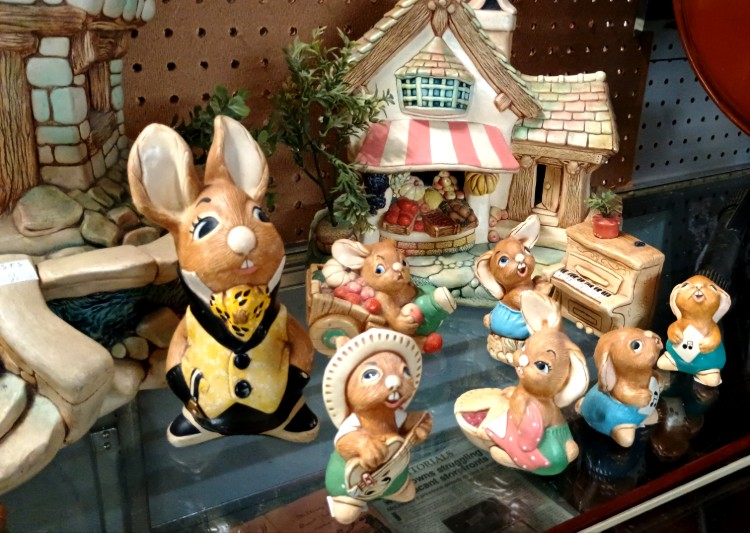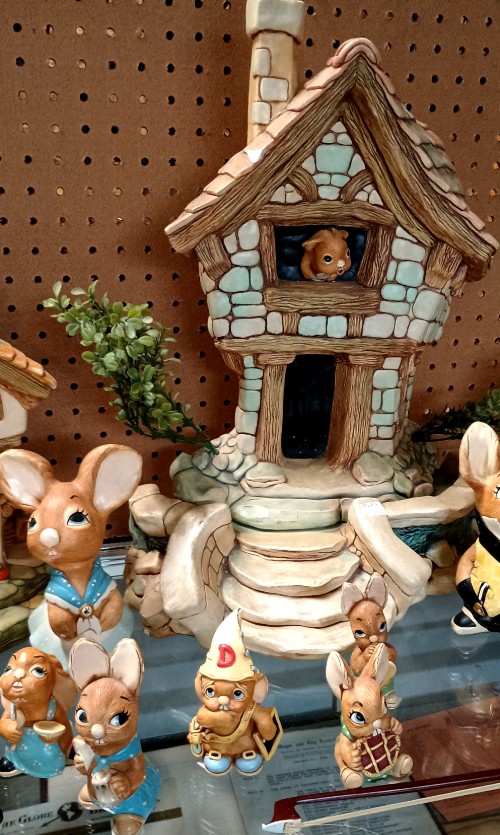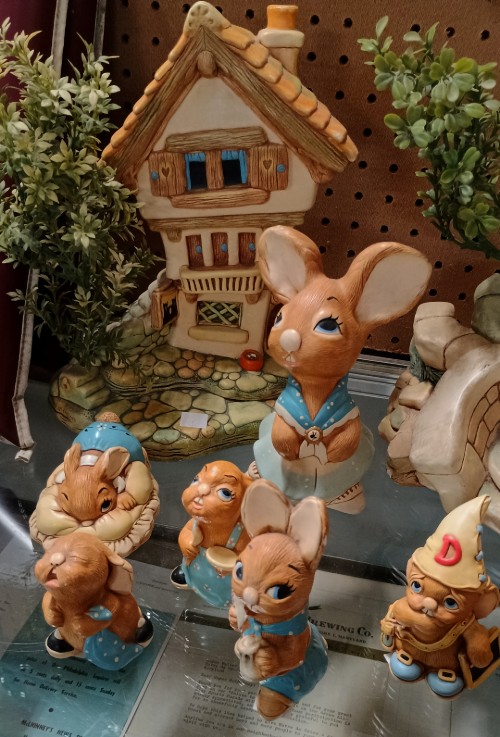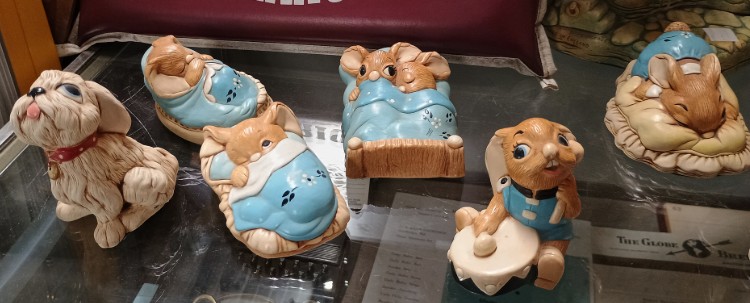You may not think of bunnies at this time of year. But this delightful collection came into our store recently and we know it would make someone (young or old) a delightful Holiday Gift.

Actually, although PenDelfin is best known for its rabbits, it’s the rare earlier wares made by the company that are most sought after by today’s collectors. But we’ll come to them in a moment.
from writeantiques.com
The story of how PenDelfin came into existence is a romantic one. The company was formed in 1953 in the shadow of Pendle Hill, just outside Burnley, in Lancashire.
Its founders were Jeannie Todd and Jean Walmsley Heap, who first met at an exhibition of paintings being staged by Burnley Artists’ Society. The two worked together at a building society in Burnley. They became close friends and decided to go into business.
Pendle is perhaps best known for its famous witches. The historians among us will know that King James I, who hated witches, wrote a book about how dangerous witchcraft was and stirred up hatred among the populace to the point where no one was safe.
In Pendle, a young beggar woman accused of witchcraft had done nothing more than ask for some pins from the pedlar. He refused and she cursed him, whereupon sometime later he fell ill.
He later accused the woman of bewitching him and the ensuing investigation brought 19 more suspected witches to the courts. One was found innocent, the rest were hanged and Pendle passed into history.
The first piece made by Jeannie and Jean was a deep relief wall plaque, called the Pendle Witch, suitably modelled as an old hag complete with cat on her shoulder riding a flying broom stick across a full moon. She became the company logo.
PenDelfin was born, the name coming from Pendle and the elfin-like figures the company produced, and the two women never looked back.
Each contributed £5 as working capital and with the garden shed as company HQ, the entrepreneurs began by making Christmas gifts for friends. Jean modelled the figures from clay and Jeannie boiled rubber on the kitchen cooker to make moulds.
Soon the hobby became a full-time business. In 1954, Doreen Noel Roberts joined the company and the foundations of the design team – JWH and DNR – were in place.
The family of mischievous rabbits first appeared the following year. Father Rabbit was first and production continues to the present day creating a steady stream of attractive and highly collectable creations that were soon sitting on mantelshelves and in bedrooms around the world.
As more and more rabbits were introduced to the family, and demand increased, the company bought Cameron Mill, in Burnley, where production continues today.
The models are made from a durable stone-based compound which is the ideal medium for reproducing the sharply detailed features of the various characters.
Each rabbit figure is produced entirely by hand by skilled workers and each is hand-painted by specially trained artists capable of the shading, tinting and highlighting demanded by the designers.
A final coat of varnish is applied and only after strict quality control are the models packaged in their familiar turquoise and black boxes and dispatched internationally, more than a thousand flying out of the door every week.
Of course, it is those models that have ceased production which today’s collectors crave. For example, if you can find one, the Pendle Witch plaque changes hands today for £800 or more.


This collection must be seen to be appreciated. And you can purchase the entire collection, or various sets and individual pieces.
So stop in today and get your Holiday Gift-Giving a real start. We’re here and we’re watchin’ for ya!



